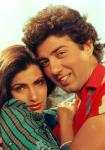 Most yoga teachers are not driven towards popular acclaim or fame. But Bellur Krishnamachar Sunderaraja Iyengar was goaded by the challenge to prove himself to all those who had dismissed him as a madcap yogi in the early days, and by a burning need to make yoga available to all.
Most yoga teachers are not driven towards popular acclaim or fame. But Bellur Krishnamachar Sunderaraja Iyengar was goaded by the challenge to prove himself to all those who had dismissed him as a madcap yogi in the early days, and by a burning need to make yoga available to all.
What does it mean when a 5,000-year-old discipline, practically synonymous with India’s hoary spiritual tradition, becomes branded with an individual’s name?
His critics may denounce the coupling, he himself may modestly deprecate the epithet, but his disciples will tell you that justice is merely being served. Whatever the merits of the case, the term is a vivid indication of one man’s involvement with and contribution to yoga. If today one in eight Americans practises yoga, the term itself a household word and its practice a global activity, even detractors will grudgingly attribute much of the credit to a certain beak-nosed, gray-haired, quicksilver gent called B K S Iyengar.
Iyengar is the man behind the phenomenal book Light on Yoga (1964) that has sold over a million copies across the world. His list of students includes violinist Yehudi Menuhin, the late J Krishnamurti, Aldous Huxley, several crowned heads of European states, and the creme de la creme of India. He has to his claim four million disciples across the world, a performance record of 10,000 live lecture demonstrations, even a star named after him. Which explains why he celebrated his 80th birthday to a huge wave of well-orchestrated acclaim at his headquarters in Pune, Maharashtra.
Initiated by the Light on Yoga trust, a Mumbai-based organisation set up with the objective of popularising yoga, the birthday celebration was massive. Some 700 foreign students and practising yoga teachers from 31 countries including Argentina, South Africa, Israel, Russia, the USA and the UK were present. Yehudi Menuhin, American composer George Rochberg, and former prime minister A B Vajpayee sent fervent greetings.
The celebration rolled on for 12 days, beginning on December 2, 1998, his birthday according to the Indian calendar, and mounting steadily until it reached a crescendo on December 14, his birthday according to the English calendar. The intervening days saw a medley of rituals, rites, cultural performances and festive food. Iyengar’s students performed asanas and pranayama at a yoga village in the Ambrosia resort under the master’s eagle-eyed vigilance.
Needless fuss over a yoga teacher, you may think. But yoga, after all, is not just exercise. It is internal and external transformation, and its teacher is nothing less than a guru. The emotional resonance of the term was in full display at Pune’s Shiv Shankar Hall. As the closing ceremonies played themselves out, legions of students, Indian, foreign, men, women, prostrated themselves before Iyengar.
By any reckoning, the success is remarkable. Annals of Iyengar lore draw graphic portraits of the scrawny, malnourished young Iyengar, his childhood buffeted by ailments such as malaria, tuberculosis and typhoid. It was only when his sister married a well-known yoga teacher, T Krishnamacharya that the young lad threw off his feebleness and took up the threads of his destiny.
It was not easy going. Sickly and stiff, he had to endure his guru’s stinging reproaches. “His hits on my back were like iron rods,” he recollects feelingly. Driven perhaps by fate, Iyengar persisted, often through 10-hour practice days. His moment of glory arrived when Krishnamacharya’s favourite disciple ran away before an important demonstration, and the ill-favoured Iyengar performed flawlessly. In time, the taskmaster relented enough to present him with a gold medal inscribed with the words, Yoganga Sikshaka Chakravarti (king among yoga teachers).
But Iyengar’s trials were far from over. As a poor and obscure yoga teacher in Pune, Iyengar recalls trudging miles in order to teach his pupils, and the fury that would overcome him when made to wait endlessly by functions inviting him to perform, and then given three minutes to do so. “I performed with anger in those moments, which I do not advocate to my students,” he says.
Like most successful men, Iyengar appears to have been driven by ferocity of purpose, a need for self-expression and perhaps even fame. He recalls going from one guru to another. “But they spoke like ordinary people,” he says. One day, he stumbled upon books on yoga with illustrations. “I decided: ‘Here I will hit.’ The illustrations and techniques did not coordinate. I decided to show alignment of body, mind and intelligence. I slowly developed the art.”
This attitude perhaps explains why it was Iyengar rather than anyone else who was most responsible for popularising yoga in the West. Most yoga teachers are not driven towards popular acclaim or fame. But Iyengar was goaded by the challenge to prove himself to all those who had dismissed him as a madcap yogi in the early days, and by a burning need to make yoga available to all.
His luck turned when violinist Yehudi Menuhin met him in 1952 and began to popularise him in the West. Fame in India only arrived in 1963 when the Times of India carried an item on Iyengar teaching yoga to the Queen of Belgium.
“That’s when I went to the masses,” he recalls. His books and mammoth classes, accommodating over 500 students with no gender or age restrictions, are populist measures -- not so much for endorsement as for censure among his critics. When he tried teaching yoga in Pune schools in his early days, purists protested against the violation of the tradition of one-to-one teaching, and put a stop to it. “I was left with nothing,” Iyengar bitterly recalls.
Ironically, today, two of his students from Dehra Dun, Rajiv and Swati Chanchani, are credited with getting permission to make yoga an elective subject in many Indian schools.
Iyengar’s strength, pride and maybe fame, lie in his mastery of yogic postures (which he disarmingly calls ‘poses’). Jehangir Palkhiwala, a well-known yoga teacher in Mumbai and an Iyengar disciple, says: “No one can touch him for precision, angle, power, force and will.” His books are illustrated by the most breathtaking postures perfectly executed. Even today, he takes pride in the fact that he practises yoga for six hours a day. And his centre in Pune, the Ramamani Iyengar Memorial Yoga Institute, has friezes of the master in some of his most flamboyant asanas decorating its external walls.
In his foreword to Light on Yoga, Yehudi Menuhin pays a tribute to Iyengar’s prowess: “Whoever has had the privilege of receiving Mr Iyengar’s attention, or of witnessing the precision and beauty of his art, is introduced to that vision of perfection and innocence which is man as first created -- unarmed, unashamed, son of God -- in the Garden of Eden.”
Yet even here, Iyengar does not escape censure. He is accused of glorifying the body and converting yoga from a way of life to a physical culture. Says one yoga expert in Mumbai who did not wish to be named: “He may have given rise to the belief that yoga is only asanas.” Although Iyengar does dwell upon the eight limbs of yoga enunciated in Patanjali’s Yoga Sutra -- yamas, niyamas (dos and don’ts), asana (postures), pranayama (breath-control), pratyahara (sense withdrawal), dharana (one-pointedness), dhyana (meditation) and samadhi (union with universal consciousness) -- in his books, critics say that in fact, his teaching revolves around the physical aspect alone.
The accusation is roundly refuted by his disciples, though a trifle defensively. Says Dr Neela Karnik who edits the group’s journal: “The entry point is asana but all the ashtanga yoga limbs are enfolded into it. When he tells you, ‘don’t move’, that’s a yama. Keeping still is a form of pratyahara.”
His students claim to have reaped considerable physical and mental benefit from his teaching. Says Frenchman Biria Faeq: “I’ve gained energy, clarity of mind and the art of using time. I know what I want and how to get it.” The physical benefits are by all accounts magnificent. Nivedita Joshi, daughter of Indian politician Murli Manohar Joshi, reveals: “I had been suffering for 12 years from a damaged spine when I came to Guruji. He cured me and helped me regain my lost confidence.”
Israeli Zippora Weiner, 59, has an astounding tale to relate. Blown up in a land mine and given up for dead for more than eight months, she was, in her own words, “broken” when she met Iyengar. The first two months were spent with Iyengar hitting her all over. One day, uncertain whether to continue with the masochistic treatment, she decided that instead of resisting him, she would surrender. “That day,” she recalls, “he said: ‘Now we start’.” Today, glowing with health, she teaches Iyengar yoga in Israel.
“He has tremendous reserves of love. And he safeguards everyone’s self-respect. If you can’t sit in padmasana (the cross-legged lotus pose) or vajrasana (kneeling with feet tucked under behind), he will not tell you to sit on a chair. He will rig up some device, maybe a cushion, or a bolster, until you too can do the padmasana like anyone else,” adds Weiner.
The most controversial aspect of Iyengar is his reputation for hitting his students. He is quoted as saying: “I hint, nothing happens. I hit and it happens.” Ask him about it, and he will tell you in all seriousness: “There’s a skill in my hitting. I use it to move the skin and help them get a better pose.”
So there’s no anger in the hitting? “What anger?” he smiles so gently that you are forced to agree. Besides, asks Iyengar aptly: “If people minded my hitting, why would they come to me?” Certainly you can’t answer that. The love he is surrounded with is as palpable as the love he responds with, greeting everyone who comes to meet him by name, smiling, talking, and joking, without self-consciousness or arrogance.
Even the props that Iyengar uses, such as ropes, benches, bandages and wooden bricks, come under attack by purists. But Iyengar says stoutly: “Many people who cannot do classical poses come to me. I knew that yogis in the past had used ropes and other things in the jungle. So I decided to use them to help with backbends and shavasanas. My purpose is to help people move their bodies without injury.”
Clearly, he is no purist. He has taken liberties with the discipline, true. But can’t that be said of all reformers and prophets? Perhaps Iyengar Yoga is actually more relevant to the times. Whatever the verdict on Iyengar, you have only to look at him basking in the attention of his innumerable disciples to know that he must have done something right.
Image: B K S Iyengar. Photograph: Paresh Gandhi/Rediff.com.
Reproduced with the kind courtesy of awaken.com.











 © 2025
© 2025